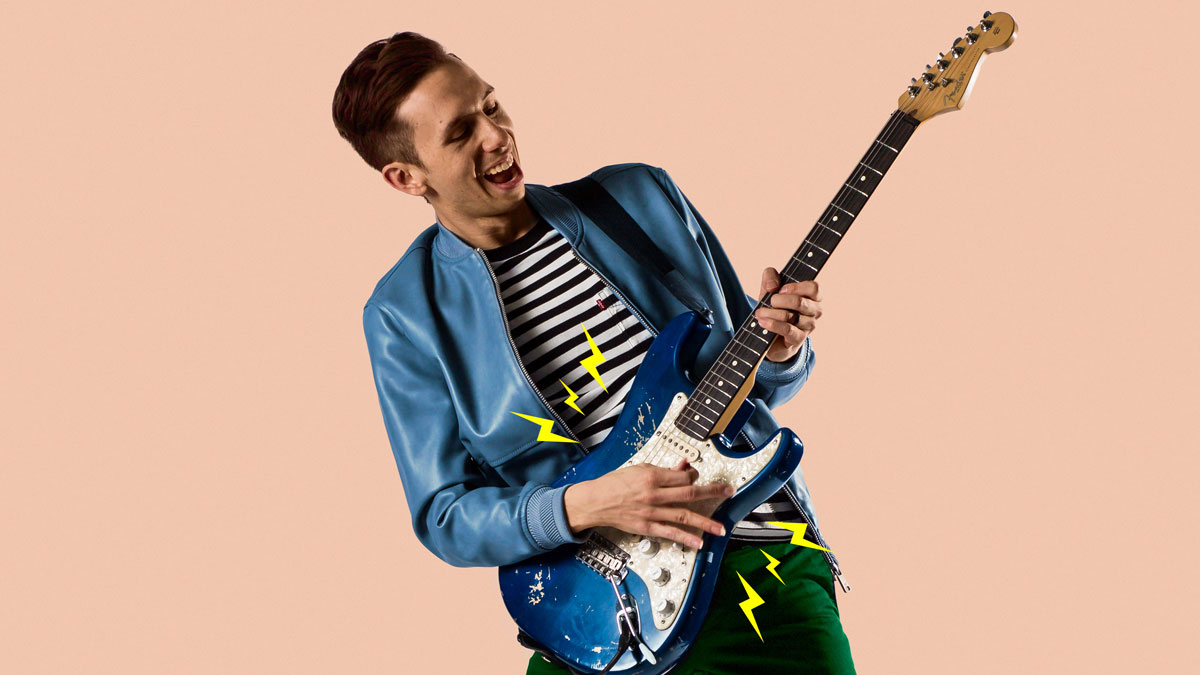Cory Wong: “The key to it all, the starting point for understanding, is just to listen”
We talk to the Vulfpeck guitarist and modern funk whiz
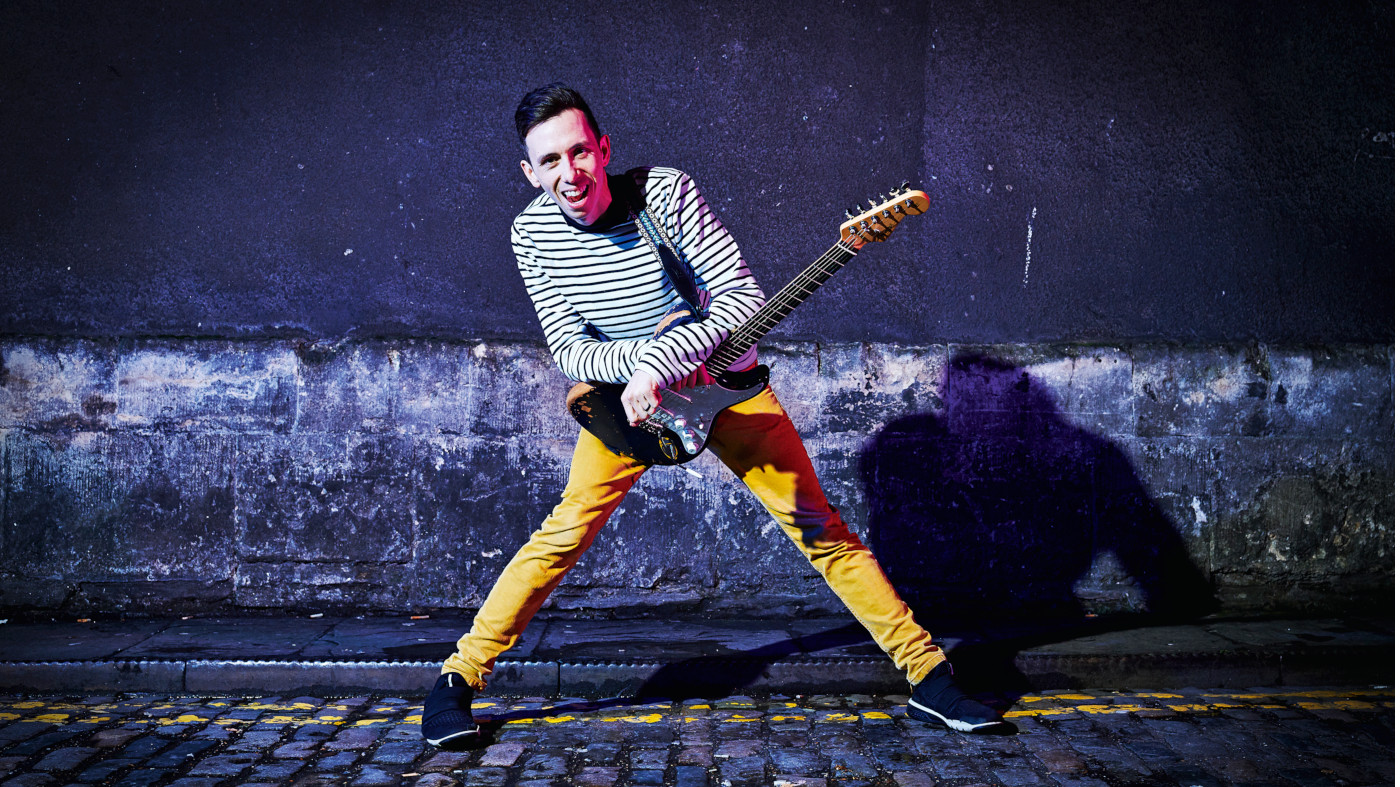
Coming to fame playing with modern funk collective Vulfpeck, Cory Wong is forging a career path as a ‘rhythm as lead’ electric guitar player.
Whether he’s playing with the Michigan funksters or working on solo material, for now at least, hooks are in, shred chops are out and solos have to work ‘for the song’.
In what is primarily instrumental music, Wong’s percussive Stratocaster cleans take centre stage.
Owing a debt to his love of jazz and jam bands, Cory’s funkily fresh songs blend ‘worked out’ tunes with free improvised sections - pre-planned but not pre-prepared. Listen to his recorded material or check him out live and you’ll always hear a group of musicians re-discovering their music and firing off each other’s performances.
Besides the obvious musicianship, holding it all together is Wong’s infectious showmanship and innate, impeccable sense of timing. We sit down with Cory ahead of a gig on his recent UK tour to talk technique.
Do you have any tips to help players who may be new to the style get into playing funk?
“I think the number one thing is listening. Listen to a lot of funk music and play along with the records and see how your instincts on time are different than what’s being played on the records.
Want all the hottest music and gear news, reviews, deals, features and more, direct to your inbox? Sign up here.
“A lot of times, people who come from a rock background might push time or push the tempo a little more and be a little more driving than some of the funk bands that they really like. So they’re used to driving and pushing, but maybe it needs to lay back.
“Some funk music is very driving and forward, but the biggest thing for me, and the key to it all, the starting point for understanding, is just to listen. And the main listening points that I would give right out of the gate are... listen to the entire Prince catalogue, the entire Earth, Wind And Fire catalogue, Ohio Players and Sly And The Family Stone. Those records would be great starting points for just listening.”
What did you learn from listening to those artists?
“I thought I knew at first how to play funk music and really get into it until I really dug in and started listening deeper. I was realising, ‘Wow, I’m playing way more notes in my chord voicings than any of these other guys are!’
“One of the early tips that I learned and what I like to tell people is you don’t need so many notes in your chord voicings like you do in other styles of music - partially because a lot of the instrumentation has to do with horns, or with a keyboard player, or multiple keyboard players.
“If you’re playing very rhythmic funk stuff, and there’s a lot of strings that you’re hitting and a lot of harmonic information, it can be a little too thick or overwhelming, when you might only need two notes or one note or three notes to accomplish what needs to happen.”
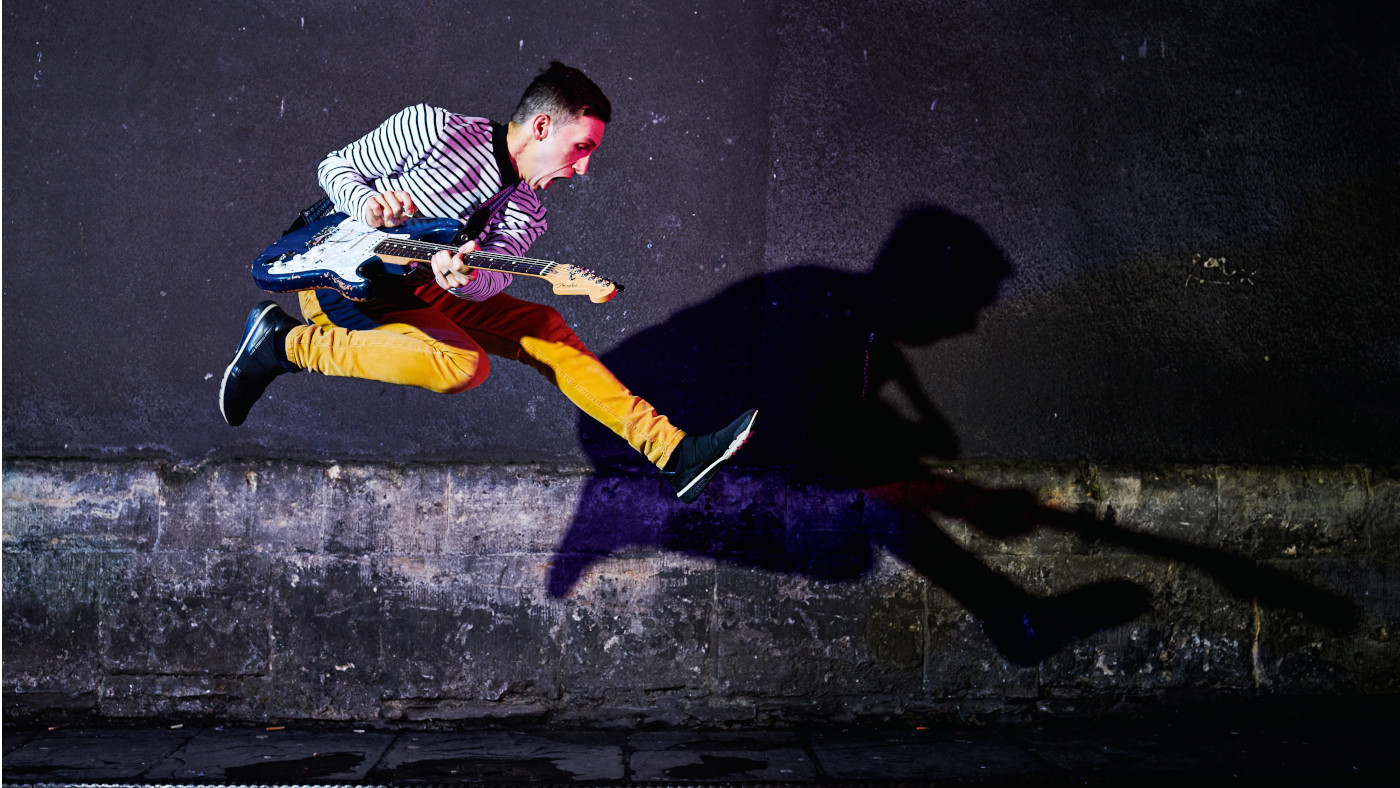
Not too many notes
Presumably you always have a good idea which notes they should be?
“It totally depends on the range of the song, usually. I’m normally, in a very generic sense, on strings two, three and four. Like 80 per cent of the time on strings two, three and four - the B, G and D strings.
“Sometimes I’m playing on a higher string. Sometimes I’m playing stuff that’s lower if I want to have something that’s a little more meaty. But that range of the guitar and those strings, like, I could play an entire record and just use those strings and be fine, you know?
When I remove all that extra stuff, it just opens up and it has room for the bass to sit and speak
“A lot of the funk music that I play is around dominant harmony or minor harmony and I’ll think about a sixth-string rooted voicing or a fifth-string rooted voicing and I just pick two or three of those notes as the main ones and then mute the other strings, especially if I’m doing something that’s really rhythmic.
“If I have too many notes in my voicing, it just sounds like a big [mess]; it sounds too big, it sounds cluttered. When I remove all that extra stuff, it just opens up and it has room for the bass to sit and speak. And rhythmically I can drive and [give] some harmonic information. But a lot of the rich harmony usually will come from keyboards or horns or that sort of thing.”
How do you incorporate single-note lines around your chords?
“I kind of think of the different roles in that side of it. I think of a percussion section, like bongos and shaker. I also at the same time think of horn stabs or little horn hooks, but just compact horn hooks. You know, just like an orchestra has a string section, brass section, woodwind section, all these different sections that serve a purpose.
“I kind of think of my parts orchestrated by function. And if I’m thinking of my part more as a percussive thing that needs a little bit of melodic intent, then I'll think of it mostly as a rhythmic thing with a little bit of note action in there to kind of outline the harmony - just to support the harmony.
“Sometimes I think of a single-note line more as a melodic supportive thing or sometimes as a lead thing... like the main accompaniment being the single-note guitar part. But also sometimes it’s there just to be this driving force of rhythmic momentum.”
Ta-ka-ta-ka
How do you keep the chords distinct from the single notes?
“So much of that is in the muting, and, for me, it’s a huge relationship with the right [picking] hand and left [fretting] hand muting. So I do a lot of palm-muting when I play and I also do a lot of left-hand muting. So I kind of subscribe to the [method of] constant 16th note alternate picking motion - my hand is always going in 16ths and I’m just choosing when to hit the strings.
“And then within that, [I’m choosing] ‘when do I hit the strings?’ and ‘when am I accenting?’ - then my left hand decides which notes are going to out the door.
You know, there's a huge relationship between the left hand and the right hand
“By default I’m kind of muting everything and then just pressing down my finger on which notes to let through. I get the rhythmic thing of the ‘ta-ka-ta-ka, ta-ka-ta-ka’, but then the notes poke through when my left hand presses down.
“You know, there's a huge relationship between the left hand and the right hand, but the right hand mostly is a constant motion flow thing with some accenting, and depending on what I'm doing, a little bit of palm-muting there as well.
“Prince has certain ways that he does a lot of accents on the 'a'. So you get into the instincts of the artists that you're really into or trying to emulate and then it kind of informs your decisions. So that's a fun thing that I've just constantly worked on.
“John Frusciante has certain accent patterns that he does that are different than Al McKay in Earth, Wind And Fire, or Prince or Paul Jackson Jr., or David Williams on those Michael Jackson records. And again that all goes back to listening and emulating by playing along.”
So once you’ve got the 16th note basics down, how do you then take your ideas and turn them into hooks?
“It depends whether I am the lead instrument in the moment or whether I’m a supporting role. Number one, what is my role? What is my function within the song? Am I supposed to be the thing that’s out front? Am I the main accompaniment instrument?
“Or am I just straight up, like, the hook? If that’s the case, the information that I’m putting out is going to be much more potent and obvious than if I’m just, like, the thing kind of in the background.”
You play a lot of diads and you use them very melodically. Do you tend to play up and down the fretboard or more in scale box shapes?
“I think more horizontal than vertical because also, even as I play that way, it simulates more of the human voice and actually singing a melody. There’s something about it that feels less like a real human voice than if I just go straight up the string. I connect to the intervals much more than if I’m just going vertically.”
Tell us about your creative approaches to soloing...
“I grew up listening to and playing Eric Clapton, Stevie Ray Vaughan and Weezer, and things like that. My favourite record of all time is the Weezer Blue Album - there’s a guitar solo on every song, you know, and the way that those solos work is... [pauses]... It functions as a guitar solo and is an epic musical moment but it’s not this like shred-fest.”
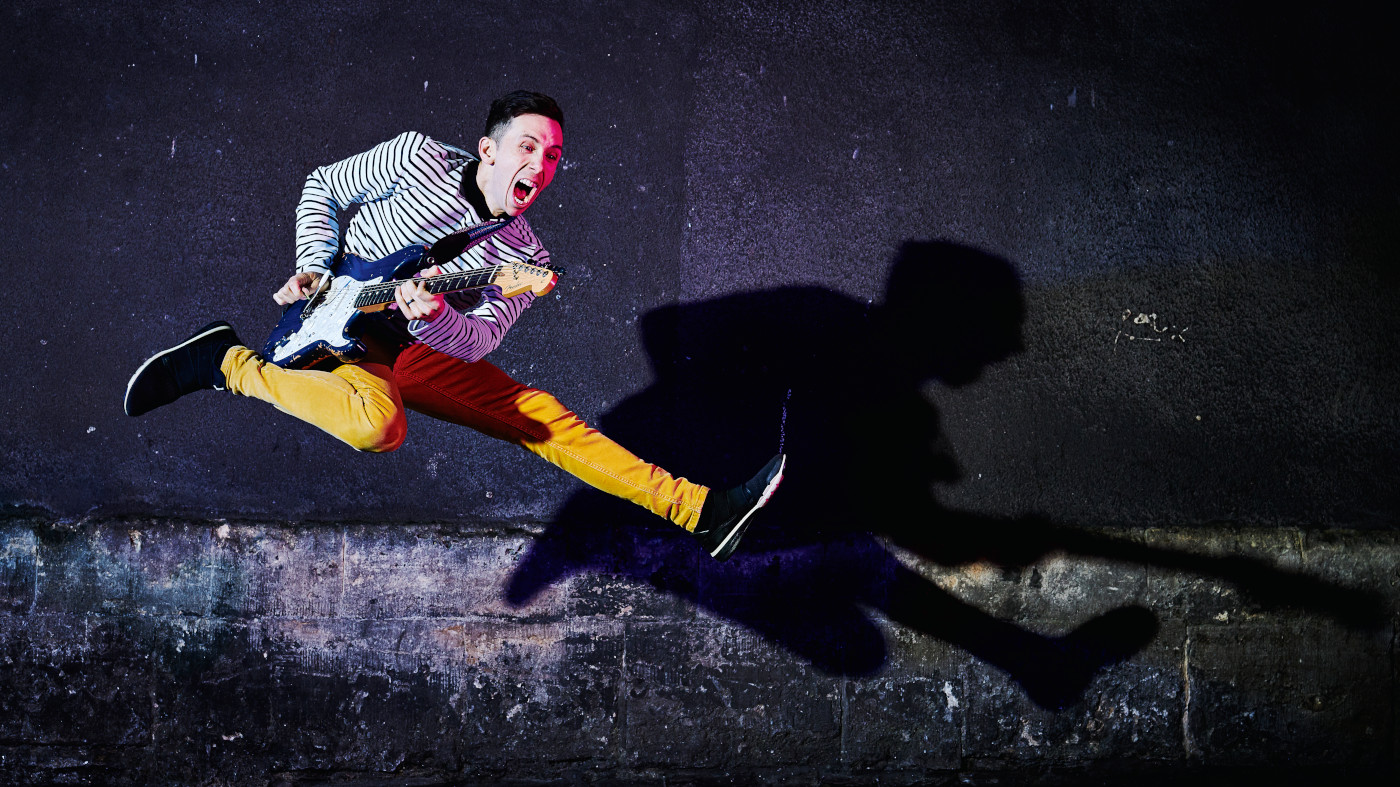
Keep it clean
It’s very different to Clapton and SRV, though!
“Yeah. And in a lot of cases, he’s just playing the melody on a guitar, which is cool. But it just happens to be a guitar solo, you know, a screaming guitar solo. And then there’s also, like, the jam side of things that I was really into. And I listened to a lot of [John] Scofield and that sort of thing. So that’s a big part of my upbringing. As far as how it relates in my music, I mean, I don’t really ever play guitar solos in Vulfpeck but in my solo music I do.
It’s a little more of a riddle for me to solve the rhythm section guitar player-led band and not have it be guitar solos all the time. It’s fun!
“Also, being an instrumental guitar-led band where it’s not a shred-fest like some people expect, the blueprint is kind of set for a guitar-led band to be a lot of guitar solos and a lot of shredding. It’s a little more of a riddle for me to solve the rhythm section guitar player-led band and not have it be guitar solos all the time. It’s fun!
“So my role on the instrument being one that’s still a lead but not always shredding or playing a lot of guitar solos. I mean, I played several guitar solos on my shows and my records but it’s not as much like ‘the thing,’ you know? It’s more of an ensemble sort of thing.
“But that being said, what everybody else in the band is playing matters a lot more because it needs to support what I’m doing as the lead thing. And if my lead thing is not as obvious to the average listener on what is supposed to be the focal thing, then what the rest of the band is playing really has to be very purposeful.
“If I’m just out there, shredding out front, and it’s obviously like a lead guitar thing, the band has a lot more leeway on what they can do as a supporting role. So there’s a lot more nuance to what I’m doing and what the band is doing that just requires a little more focused planning.”
How do you set up your sound for soloing?
The way that I run my amps, I can never make them clean enough. I like amps as clean as possible
“Normally, the way that I run my amps, I can never make them clean enough. I like amps as clean as possible. I run my amp super clean. A lot of the times when I record I just record DI.
“For me, my main cruising gear is just a clean Stratocaster sound in fourth position, which to me is neck-middle. Then the next gear is moving into fifth position, which is just the neck pickup, and that gives me a little more bite; it’s a little more aggressive.
“The next gear that I have is the fourth position with a [Vertex] Steel String on, and the next gear is the Steel String on in fifth position. Then the Warhorn [Walrus Audio Warhorn overdrive pedal] on in fourth position and the Warhorn on in fifth position. Sometimes I’ll turn on both of the drives, but I really think in terms of stair-stepping in my gears in small increments to be able to have nuanced differences from tone to tone.”
Do you like to use a compressor pedal?
“I do. Yes. I have an ‘always on’ compressor. It’s always on! It’s on everything. When I first started using a compressor, I couldn’t tell what it was that I loved about it. It just sounded more pro. It went from sounding good to all of a sudden, like, ‘Wow, that sounds like it should be on a record’ - that sort of tone.
“There are certain guitar compressors that kind of tighten it up and make it a little bit thinner. The compressor sounds that I like maybe make it sound a little warmer and thicker. I’ve had certain compressor pedals that I’ve used that add a little bit of bite. I don’t like that at all. I like the opposite. And I use a blend knob so it’s like a parallel compressor like I would do in a studio setting.”
The Wong gear
For his 2019 UK tour, Cory eschewed his preferred amps and pedals in favour of a simpler rig

Pedals
Line 6 HX Effects
“I’m trying something out now. I’m checking out the [Line 6] HX Effects. It’s cool. It’s harder to navigate than the M9 - I used to use the M9. This one’s fine. It’s cool. I dialled in the drives to sound good with the amps that I’m using. The HX Effects is cool because it’s got it all in one simple [pedal].”
Wampler Ego Compressor
“The Ego Compressor adds a warmness and kind of smoothes out the top end of things a little bit and it makes me feel like I have a thicker tone. With that pedal I just use all the knobs at noon, pretty much. It’s not a drastic difference in sound, but, if I had to pick one pedal to use the rest of my life, it would be a compressor! Which isn’t a lot of fun, but it’s just like, well, I don’t know, I can get a lot of songs just out of my guitar itself!”
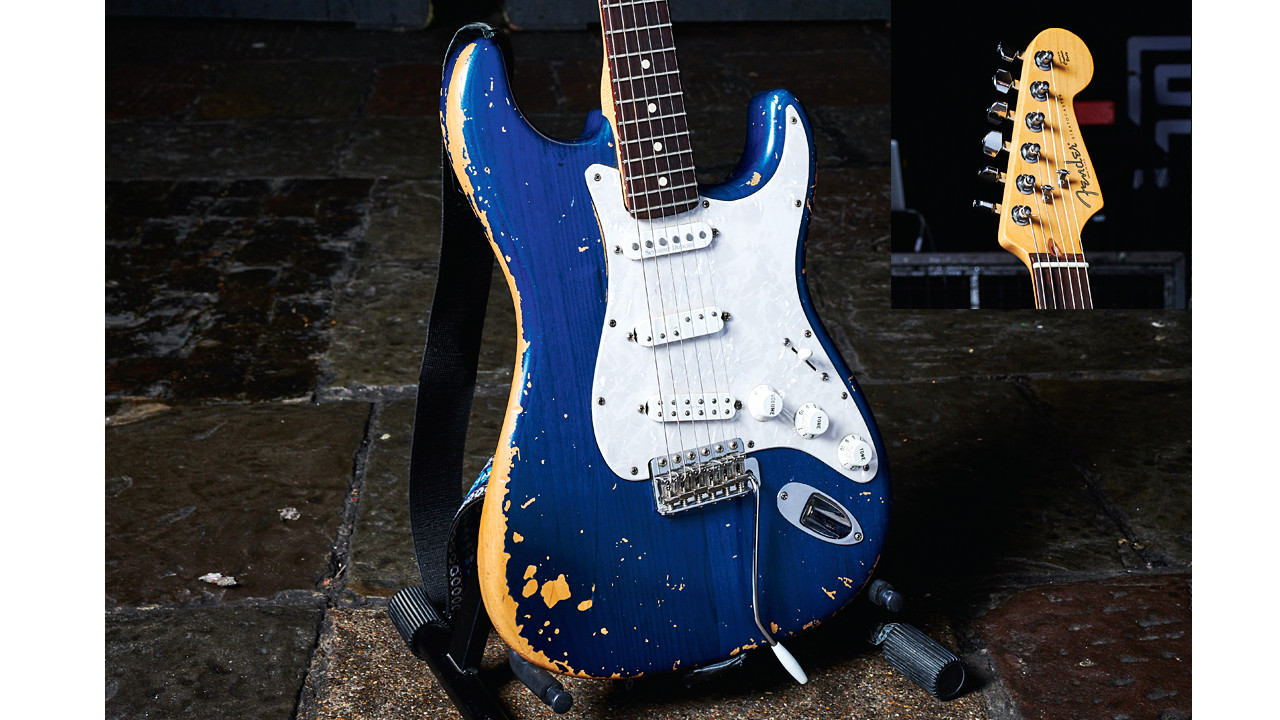
Fender Highway One
“My main Strat is just a simple Highway One Stratocaster - the guitar that I’ve had since high school. I have a Seymour Duncan Classic Stack pickup in the neck, a Duckbucker in the middle, which I don’t love - it’s just fine. I had some guy at a store recommend it. He put it in. Whatever... It’s fine! And in the bridge it’s a JB Junior. It sounds cool. It’s a mini-humbucker. It’s a little bit thicker than your average Strat bridge pickup.”

Kithara Guitars Custom
“The other [guitar] I have is one that somebody built for me. There’s a builder in Ireland - Kithara Guitars. This guy just hit me up and was like, ‘Hey, I want to show you this guitar that I’ve built.’ This guitar is amazing. It’s really, really well made, feels great and what’s cool is that I don’t know what pickups he used but they sound a lot like my Antiquities [Seymour Duncan Antiquities installed on another of Cory’s Strats].”
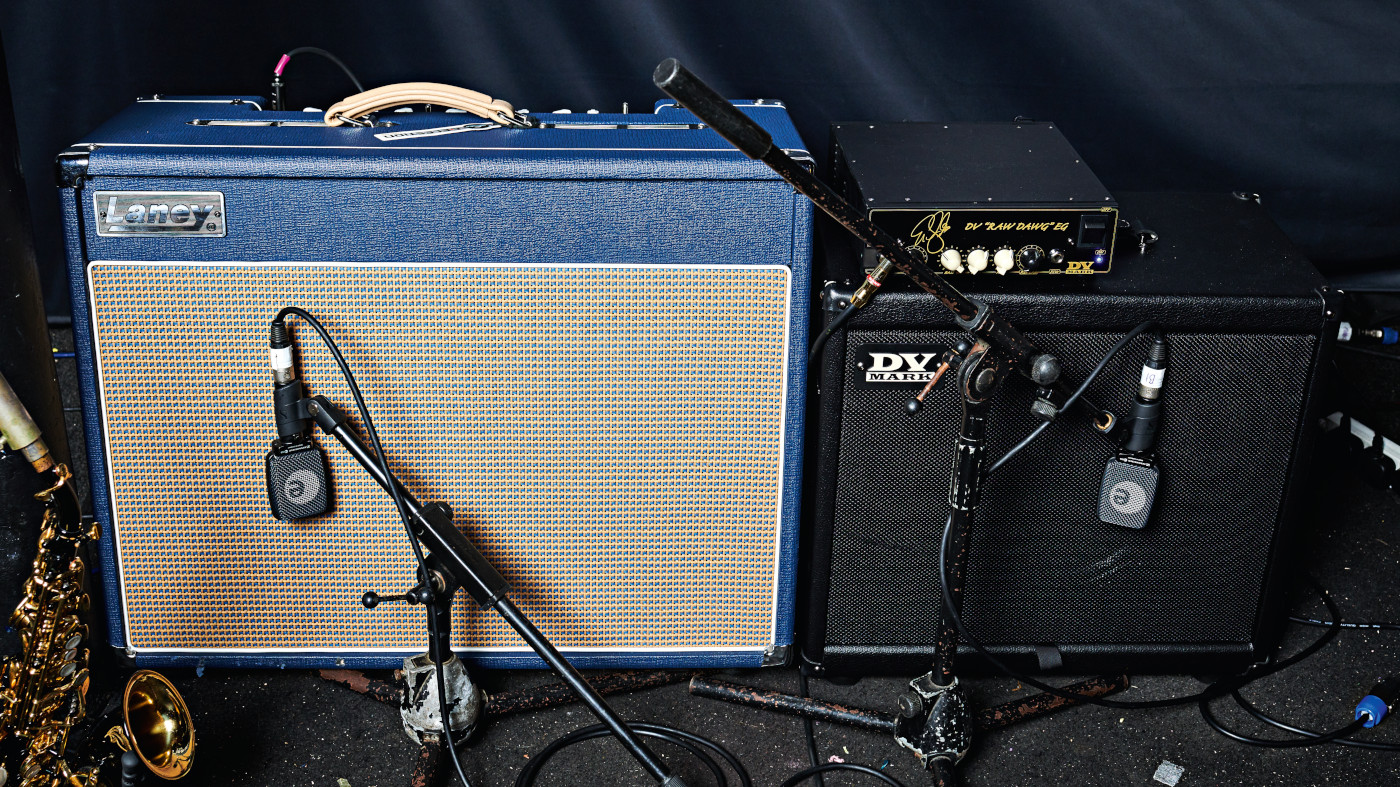
Amps
Laney Lionheart 212
“I use different amps in different settings. For this tour I’m using the Laney Lionheart 212 which is just a nice really clean amp. It’s got a lot of clean headroom.”
DV Mark Raw Dawg
“I also use the DV Mark Raw Dawg, which is a solid state amp. Actually it has been one of my favourite sounds that I’ve ever had - this combination. The DV Mark is solid state but I love it. Typically what I backline is a Fender Twin or a Fender Super Reverb, but sometimes, those, depending on the one, even on three they start to get tube saturation and breakup - which a lot of people like but I don’t because I want clean! I almost want it to sound DI!”
Chris has been the Editor of Total Guitar magazine since 2020. Prior to that, he was at the helm of Total Guitar's world-class tab and tuition section for 12 years. He's a former guitar teacher with 35 years playing experience and he holds a degree in Philosophy & Popular Music. Chris has interviewed Brian May three times, Jimmy Page once, and Mark Knopfler zero times – something he desperately hopes to rectify as soon as possible.
